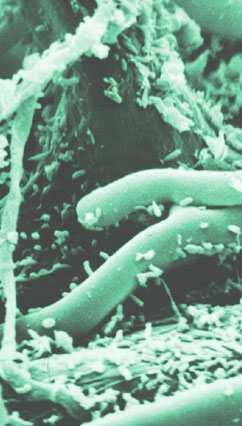New gene shift discovered
 Australian researchers have discovered a new ‘superhighway’ for gene transfer between microorganisms.
Australian researchers have discovered a new ‘superhighway’ for gene transfer between microorganisms.
Local scientists have discovered a mechanism that explains gene transfer between Bacteria and Archaea.
These microorganisms look similar but evolved into separate lineages more than 3.5 billion years ago.
Archaea form one of three major branches in the tree of life, Bacteria and Eukarya (including plants, animals and fungi) being the other two domains.
This new study reveals the presence of integrons in Archaea. These genetic elements facilitate horizontal gene transfer from one species to another, and are well known in Bacteria, but previously not known in other domains.
They are the modern-day equivalent of a plug-and-play device that can swap material between two different operating systems.
The finding establishes for the first time a highway for gene transfer between two microbial groups found in almost every habitat on Earth.
“This opens up a brand-new hunting ground for genes with new functions,” says co-author Professor Michael Gillings, who heads the laboratory where the work took place.
“This changes our understanding of how genes are shared around and has significant implications for evolution,” he says.
“It’s an example of a really big connection between two separate branches of the tree of life.
“Evolution is normally thought of as being like a tree. Here, what we previously thought of as the tips of branches can actually fuse together as integrons share genes around. So evolutionary trees become a multidimensional network where everything is connected via exchange of genetic material.”
“Traits that were typically spread by integrons in Bacteria can also encompass Archaea,” says co-author Dr Anahit Penesyan from the ARC Centre of Excellence in Synthetic Biology. “This opens up the potential to use integrons in conferring specific traits to Archaea in the future. But it also highlights the dangers of undesirable traits spreading naturally within the less explored domain of Archaea.”
When a transfer event occurs, the recipient cell instantly acquires new functions.
This allows very rapid rates of evolutionary changes. This has been a driving force behind innovation and diversity within bacteria. A worrying example is antibiotic resistance to pathogens as bacteria get smarter at evading threats.
However, as archaea are millennial-old survivors found in some of the most hostile places on Earth, it could also open access to genes that may mitigate the impact of human-induced environmental changes.
The work has important implications for environmental and human health, given that bacteria and archaea are found on human skin, and in human guts and mouths. They also drive nutrient cycles on a planetary scale and play a role in sewage treatment and biogas production.








 Print
Print